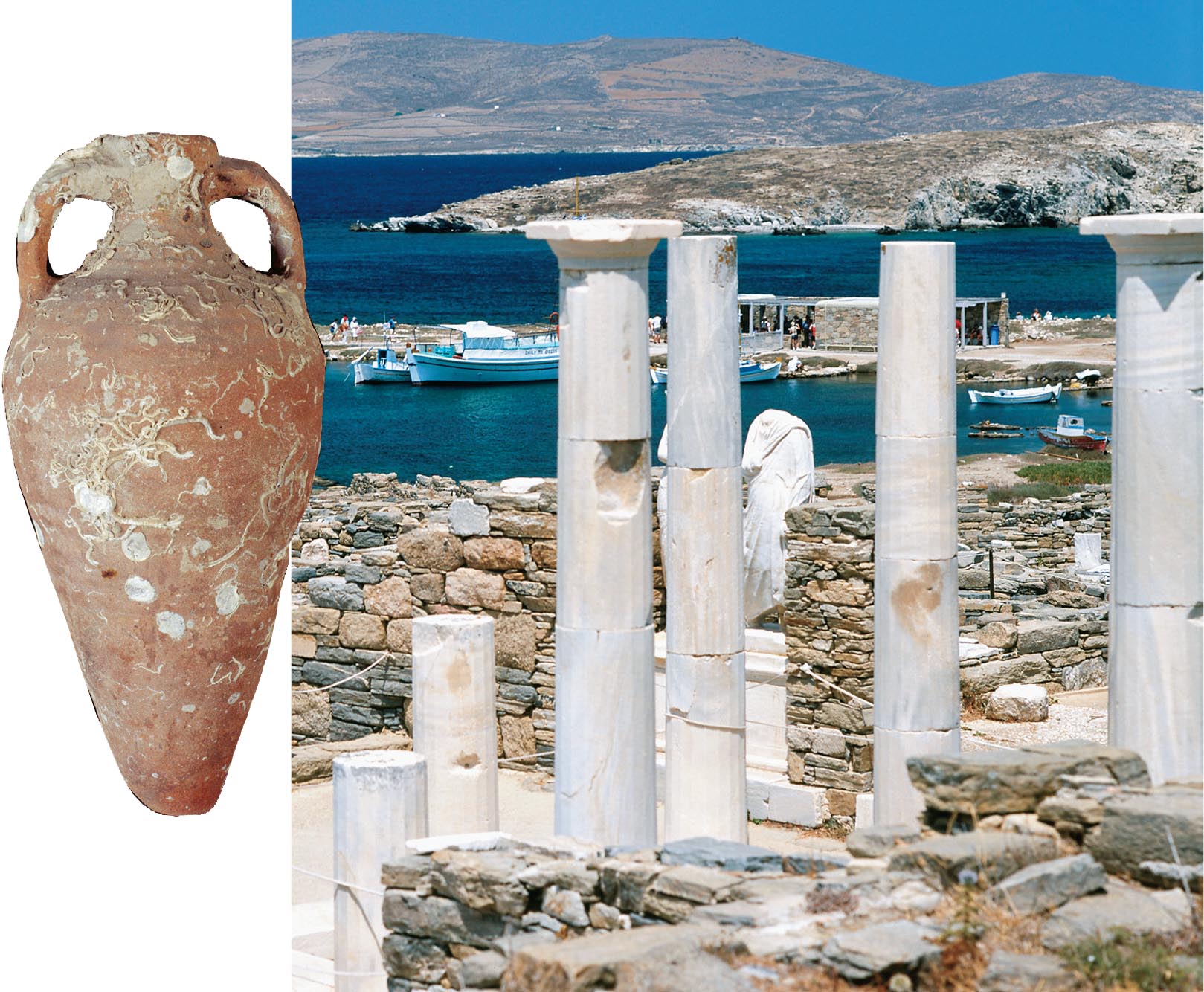A History of World Societies:
Printed Page 135
A History of World Societies Value
Edition: Printed Page 132
The Growth of Trade and Commerce
Not only did Alexander’s conquests change the political face of the ancient world, but the spread of Greeks eastward also created new markets, causing trade to flourish. The economic connections of the Hellenistic world later proved valuable to the Romans, allowing them to trade products and ideas more easily over a broad area.
When Alexander conquered the Persian Empire, he found the royal treasury filled with vast sums of gold and silver and other valuables. The victors used this wealth to finance the building of roads, the development of harbors, and especially, as noted earlier, the founding of new cities. These cities opened whole new markets to merchants who eagerly took advantage of the unforeseen opportunities. Whenever possible, merchants sent their goods by water, but overland trade also became more prominent in the Hellenistic era. Overland trade with India was organized by Asian merchants and conducted by camel caravans through the harsh terrain of western Asia. Once goods reached the Hellenistic monarchies, Greek merchants took a hand in the trade. Commerce from the east arrived at Egypt and the harbors of Palestine, Phoenicia, and Syria. From these ports goods flowed to Greece, Italy, and Spain. This period also saw the development of standardized business customs, so that merchants of different nationalities, aided especially by the koine, communicated in a way understandable to them all. Trade was further facilitated by the coining of money, which provided merchants with a standard way to value goods as well as a convenient method of payment.
The increased volume of trade helped create prosperity that made luxury goods affordable to more people. As a result, overland traders brought easily transportable luxuries such as gold, silver, and precious stones to market. They extended their networks into China, from which the most prominent good in terms of volume was silk. The trade in silk later gave the major east-

More economically important than trade in exotic goods were commercial dealings in essential commodities like raw materials and grain and industrial products such as pottery. The Hellenistic monarchies usually raised enough grain for their own needs as well as a surplus for export. For the cities of Greece and the Aegean the trade in grain was essential, because many of them could not grow enough in their mountainous terrain. Fortunately for them, abundant wheat supplies were available nearby in Egypt and in the area north of the Black Sea.
The Greek cities often paid for their grain by exporting olive oil, wine, honey, dried fruit, nuts, and vegetables. Another significant commodity supplied by the Greeks was fish, which for export was salted, pickled, or dried. This trade was doubly important because fish provided poor people with protein, an essential element of their diet.
Slaves were a staple of Hellenistic trade, traveling in all directions on both land and sea routes. Ancient authors cautioned against having too many slaves from one area together, as this might encourage them to revolt. War provided prisoners for the slave market; to a lesser extent, so did kidnapping and capture by pirates, although the origin of most slaves is unknown. Both old Greek states and new Hellenistic kingdoms were ready slave markets, and throughout the Mediterranean world slaves were almost always in demand for work in shops, fields, farms, mines, and the homes of wealthier people.
Most trade in bulk commodities like grain and wood was seaborne, and Hellenistic merchant ships were the workhorses of the day. A merchant ship had a broad beam, which made it more stable and allowed large cargoes, and it relied on sails for propulsion. Such ships were far more seaworthy than Hellenistic warships, which were long, narrow, and built for speed. A small crew of experienced sailors easily handled the merchant vessels. Aside from providing work for sailors, maritime trade presented opportunities for shipbuilders, dockworkers, teamsters, and pirates. Piracy was a constant factor in the Hellenistic world and remained so until Rome cleared it from the seas.
Despite the increase in trade, the Hellenistic period did not see widespread improvements in the way most people lived and worked. Cities flourished, but many people who lived in rural areas were actually worse off than they had been before, because of higher levels of rents and taxes. Technology was applied to military needs, but not to the production of food or other goods. Manual labor, not machinery, continued to turn out the agricultural produce, raw materials, and manufactured goods the Hellenistic world used. The Greek historian Diodorus gives a picture of this hard labor, commenting on life in the gold mines owned by the Ptolemy rulers of Egypt:
The kings of Egypt condemn [to the mines] those found guilty of wrong-
The Ptolemies even condemned women and children to work in the mines. Besides gold and silver, used primarily for coins and jewelry, bronze continued to be used for shields, and iron for weapons and tools.